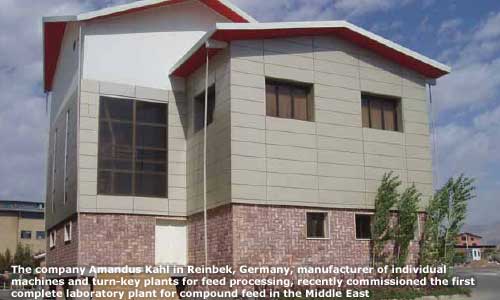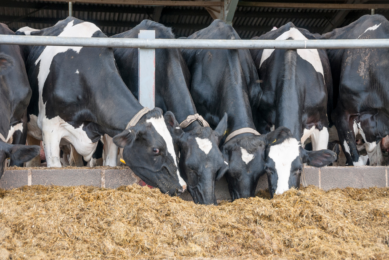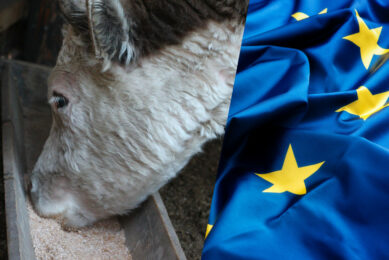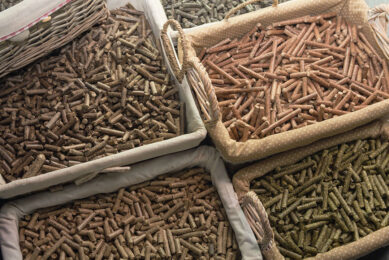By Thorsten Lucht, Amandus Kahl, Reinbek, Germany
The bigger, the better is cost-wise a normal adage for compound feed plants, but sometimes a plant is required for minimum quantities of feed, such as laboratories. Laboratory machines are machines with a capacity of 50-200 kg/h, which are suited for compound feed processing. These devices have been long known and used as individual machines, but not as a continuously operated complete plant, so far.
This plant design offers many possibilities:
- Development of formulae in cooperation with feeding test stations.
- Development and optimisation of processing parameters, such as crushing degree, composition of mixture, thermal treatment, pressure treatment, shaping.
- Scale-up to large-scale plants.
- Optimisation of shaping/product design e.g. for pellets, coarse crumbles, fine crumbles, extruded pellets, expanded product.
- Development of new marketing strategies for existing and new markets.
- Production of special compound feed in small quantities, such as pet food or feed for zoo animals, which would not be economical in a large-scale plant.
- Production of special feed for laboratory animals such as mice or rats, which is required in universities or clinics.
The multi-functional laboratory plant is suitable for universities and research institutes, for small-scale producers of compound feed for special animals, as well as for feed manufacturing groups with their own R&D department.
Defining task
The user of the plant required that the plant be able to produce test feeds with "new" formulae for poultry and fish feed. The company also wanted to be able to determine the optimum processing parameters as well as appropriate shaping of the feed. Optimisation of the processing parameters of existing formulae and scale-up to the existing large-scale plant was also a prerequisite. The plant should be able to inactivate ANF in oilseeds and legumes, and be installed in a new building.
or reasons of hygiene and in order to avoid contamination, the laboratory plant and the feed mill have to be located in different buildings. To comply with veterinary regulations, laboratory animals must not be kept on the same premise. Separate land for housing and breeding the different animals was available.
Plant design
For the above-mentioned reasons, a separate building was erected for the laboratory plant. The design of the building allows for an extension of the existing plant or the installation of a second plant. The steel structure, which the machines are mounted on, consists of four levels. The first and the second level are provided with glass windows on three sides. This provides for daylight in the plant and thus for pleasant working. The structure is provided with a spiral steel staircase for access to the levels, and a separate elevator for transport of the raw materials. Furthermore, several office, laboratory and storage rooms are housed in the building.
The process diagrams of the weighing, grinding and mixing line and the expander, extruder and press line were developed and determined in accordance with the performance requirements. With the new installation the following products can be produced:
• Extruded fish feed
• Expanded pelleted poultry feed
• Pelleted cattle, sheep and horse feed
• Hygienised, mash layer feed
• Hydrothermally treated individual components.
Weighing, grinding and mixing
The first section of the plant is composed of the weighing, grinding and mixing line. Four bins for bag filling are available for storage of raw materials. The bagged product is transported to the corresponding level by means of the elevator. The weigher is fed by proportioning screws with two speed levels. Small quantities may also be manually fed into the weigher. The average batch size is 50 kg/batch depending on the variation of the bulk density. Four batches can be produced per hour, which means capacity of 200 kg/h. The weigher suspends to three load cells and can be filled rapidly due to two different screw speeds. Subsequently, material is conveyed to the pre-bin by means of a discontinuous suction conveying plant in which suction time and repeated starting time can be rapidly and easily adapted according to bulk density or conveying properties of the raw material.
In the following crushing process the product is ground to the desired particle size by means of an impact mill. According to the intended use, fish feed can be ground to an average particle size of 0.4 mm and poultry feed to 1.1 mm. More weighed-out coarse raw components can be added into the pre-bin.Subsequently, the ground product is conveyed into a rapid mixer with a useful capacity of 100 litres. The mixing tools are arranged on the shaft and can be adjusted. The shaft speed can be varied by means of a frequency converter. The product outlet is realised by an electropneumatically operated bottom flap over the entire width of the mixer. Apart from micro-components, liquids can be added into the mixer. The mixing time can be determined according to the product.
Compacting lines
The second section of the laboratory plant includes the thermal treatment and shaping units with conditioning, expander/extruder and pelleting line. The throughput rate of this line is approx. 200 kg/h. Depending on the open perforated surface and the specific energy input etc., varying throughputs are possible.
The mixed product is conveyed by means of a suction conveying system and is fed into a pre-bin. From the pre-bin a proportioning system conveys it to the mixing conditioner. Here, the product can be conditioned both with steam and water, as well as with other liquids.
Subsequently, the heated and moistened product is fed into the long-term conditioner. If no retention time is desired as a considerably smaller quantity of water is added, the products pass through the long-term conditioner without retention time.
The expander/extruder OE8 is one of the core machines of the plant. Depending on the chosen process, it can be used as an extruder or expander, and consists of a thick-walled mixing tube with replaceable liners and cantilevered shaft, which is fitted with proportioning, mixing and kneading elements.
The stop screws between the individual flanks of the paddles almost reach the surface of the shaft. Thus the product to be treated is uniformly kneaded and transported towards the outlet. The rapidly exchangeable outlet head forms the end of the outlet. It depends on the design of the outlet head whether the machine is used as an extruder or as an expander.
Expander variant
If the expander variant (construction series OER) is required, the expander head is equipped with a hydraulically adjustable cone forming the patented annular gap together with the tube end. By means of adjusting the cone, the pressure, the intensity of kneading, product heating, and energy consumption can be adjusted. The process can be controlled automatically.
At the outlet the pressure drops spontaneously, the material expands, and part of the water added into the mixing conditioner evaporates (flash evaporation). As considerably less water is added, less water evaporates. Thus, only subsequent cooling and no additional upstream drying is required.The size of the expanded product can be determined by means of a downstream crushing device. The expanded product can either be used for direct feeding or shaped to pellets for poultry feed. If desired, steam and various liquids can also be added directly into the expander.
Extruder variant
If the extruder variant (construction series OEE) is required, the extruder head is equipped with a hydraulically adjustable die which can be moved in or out. The knife head is provided with a separate drive and remains in its position during the die change. Due to the easy and rapid die change, different products with different diameters and shapes can be produced. The machine is relieved in the event of overload by means of hydraulic opening of the outlet.At the start of the production, the extruder does not require an increased water addition and can be started with an “open" die. Depending on the selection of raw components, composition, grinding degree, conditioning, extruder speed, die geometry and mechanical energy input, either sinking or floating fish feed with different sizes can be produced for different fish species. Due to the high amount of added water and steam, drying and subsequent cooling are necessary.
Pelleting press
Another core machine of the laboratory plant is the flat die pelleting press of the construction series 14-175. By means of pan grinder rollers the product – expanded poultry feed in this case – is pressed through a die. The knives below the die cut the pellets to the desired length. According to product and species, dies with different bore diameters are required.
The pelleting press can be operated with and without pre-treatment by means of the expander. This way the plant is flexible, and can also be used for products that do not require pre-treatment using the expander, such as sheep and horse feed.
Hygienisation
The expander/extruder ensures hygienisation of the product, meaning the product is free from pathogenic germs such as moulds, salmonellae and coliform bacteria. If mash layer feed is to be hygienised, for example, this can be done by means of the long-term conditioner which provides hygienisation at 85°C and a conditioning time of 6 minutes.The long-term conditioner, expander or extruder also provide an inactivation of anti-nutritive factors (ANF) such as trypsin inhibitors (TIU), glucosinolates in rape seed, gossypol in cotton seed, or TIU and lectins in legumes.
Drying and cooling
According to the respective production process, the different products have to be dried and cooled or only dried after shaping. This was realised in a vertical fluidized bed drier/cooler composed of two drying sections and one cooling section. The required hot air is generated by a steam/air heat exchanger. Additionally, fish and poultry feed can be fat-coated by means of a downstream coating system.
The final product is discharged in finished product cell by means of a suction conveying system. Subsequently, it can be packed in different bag sizes by means of a bagging system.
Source: AllAboutFeed vol 1 nr 1, 2010












